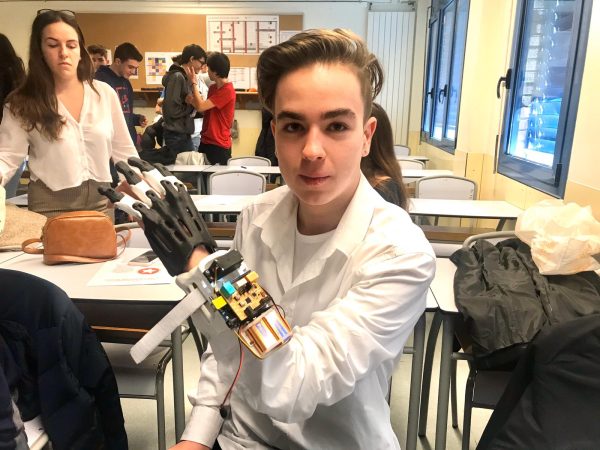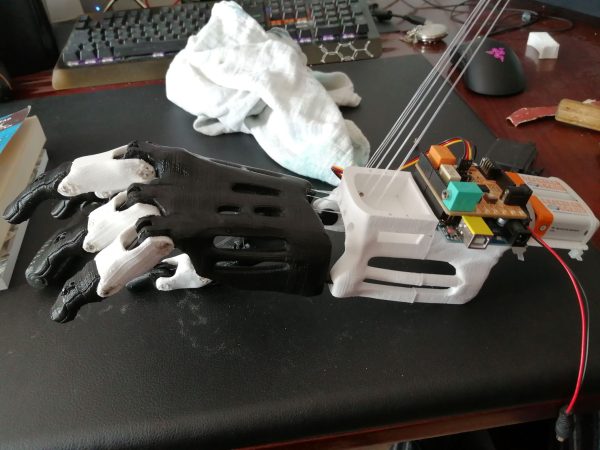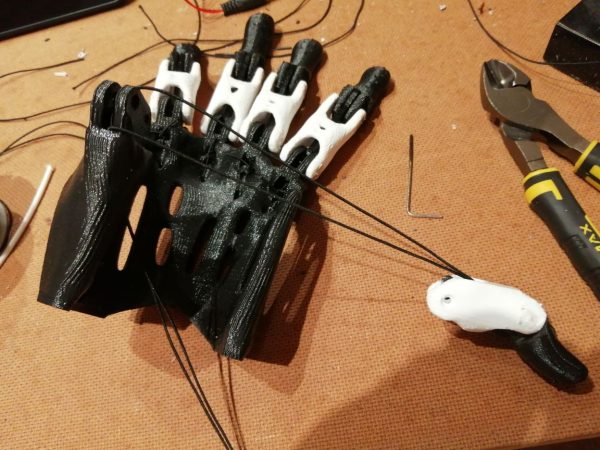
Related Post: High School Senior Makes an Award-Winning Prosthetic Finger Using Muscle SpikerShield
Tens of thousands of dollars: that’s how much people have to pay for a robotic prosthesis — not even the most sophisticated type. It’s what prodded Jorge Iglesias Costas, at the time a 17-year-old high-schooler in Barcelona, to try and design a low-cost myoelectric prosthesis for an acquaintance of his who was born without a hand.
After several hurdles, succeed he did. He stripped down our Claw to use the EMG sensor. It was his senior project that would earn him admission at La Salle Campus Barcelona. But there was a part that was even more rewarding: “witnessing her [the acquaintance’s] joy at being able to control the prosthesis with her arm,” as Jorge recently wrote on LinkedIn.

He’d been interested in robotics ever since he was 12, he tells us on a phone call. As a kid, he learned about Arduino. “Then I saw a demo of Backyard Brains Claw device and really liked it. The two ideas came together: robotics and helping people. That’s when I realized I could do prosthetics.”
The greatest problem, he recalls, was dealing with the 3D printer that he needed for the parts. At the time, he didn’t know how to use Blender or Autocad. So, with the help of a friend, he made the model, rearranged it three times and managed to adapt a prototype of a hand that was closest to what he was aiming for. Next came calibration. “Since the prosthesis takes up part of the lady’s arm, finding the optimal positioning for the electrodes was a challenge. Once we dealed with that, another problem turned up: many times, the prosthesis would malfunction, opening or closing without the wearer doing anything. The good thing is that the shield from the Claw has a button to control the sensitivity of the device. So you have to tweak it depending on the person.”
Awesome though it is, Jorge’s myoelectric hand does have its limitations. “My goal wasn’t best functioning but low cost, for people who can’t pay more than 200-300 Euros to be able to do simple things like grabbing a cup of coffee or a paper, a ball and the like.” Complex objects are also tricky as the only thing this robotic hand can do is open and close the fingers. Still, the concept is easily scalable. If you want it to be strong enough to handle heavier objects, you only need to change the motor.

Fast forward 6 years, Jorge earned his bachelor in electronics and is currently pursuing a master’s in microelectronics. The main reason why he chose that field? The robotic hand that he made while still a kid. But more than that, the experience of being able to help people, especially the disadvantaged.